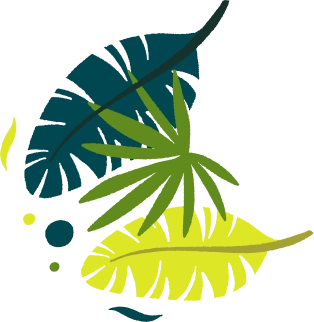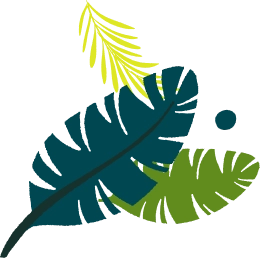


Tet Nguyen Dan known as the Vietnamese Lunar New Year is the most important holiday in Vietnam’s calendar. It marks the arrival of spring and a fresh start for families. During Tet, cities and villages alike burst into color with apricot and peach blossoms, kumquat trees, and festive “Happy New Year” banners.
Streets fill with market stalls selling banh chung (sticky rice cakes), red envelopes, and traditional foods. Fireworks boom at midnight, and the air is filled with greetings of Chuc mung nam moi (Happy New Year).
Witnessing Tet is a chance to see Vietnam’s warm hospitality and rich customs up close.
I’ll explain what Tet is all about, how to plan around it, and how to respectfully join the celebrations.
In case you are here just for the dates: Tet holidays will begin from 17th Feb 2026 and will last for a week.
During Tet (which follows the lunar calendar, e.g. Tet 2025 falls Jan 29), travel around Vietnam gets hectic. Most people arrive in Hanoi or Ho Chi Minh City before the holiday week. Flight and train tickets in the 3 days before Tet and the 3 days after are usually sold out as locals rush home to celebrate.
If you must travel, book everything well in advance (weeks ahead). I can’t stress this enough!
Note: domestic flights rarely operate on New Year’s Eve itself so you may have to get creative (some travelers book a flight to a nearby country or island and return!).
Major buses fill up fast and roads can jam with hundreds of motorbikes heading to hometowns.
Tet really is a major festival in Vietnam, I am not kidding. It gets crowded!
Tet celebrations begin three days before New Year and last a few days after… transport centres will be overflowing and tickets can be sold out.
Avoid inter-city travel during Tet if possible and stay put in one place. Getting around locally (within Hanoi or Ho Chi Minh City) is still doable by taxi or 7-Eleven Marts (which generally remain open even on holiday). If you plan to hop cities, expect very long lines and higher fares.
By Air: Fly into Hanoi (Noi Bai) or Ho Chi Minh City. Be prepared for crowds at the airport.
By Train/Bus: Book weeks in advance. Expect trains and buses to be completely full 2-3 days before and after Tet.
When to travel: If you want to see the Tet atmosphere, arrive 1-2 days before New Year’s Eve (to shop and sightsee) and stay at least 3-4 days through the holiday.
During Tet, many sights behave differently than usual - here’s what to look for:
Flower Markets: Visit Hanoi’s Quang Ba Flower Market or Saigon’s Tet flower street (Nguyen Hue Road). The night before Tet, these markets are heaving with shoppers choosing peach blossoms (north) or ochna apricot blooms (south). The sight of fresh flowers piled like snow and golden kumquat trees is unforgettable.
Fireworks: Major cities set off fireworks at midnight on New Year’s Eve. In Hanoi, good viewing spots include Hoan Kiem Lake or Van Quan Lake; in Saigon, Nguyen Hue Square or Phu My Bridge area.
I would tell you to just find a place outdoors and watch the sky light up at midnight. Avoid Fomo and keep it simple and enjoy the show.
Temple Visits: On Tet’s first days, many locals go to pagodas to pray for luck. Seeing the line at a temple like Ham Long (Hanoi) or Jade Emperor Pagoda (Saigon) is quite a sight.
However, note that famous pagodas may close parts of the day for ceremonies.
Cultural Show: In Hue, watch the Nguyen Dynasty Tet procession with cay neu (ritual pole) being raised, if held. Or, if you’re lucky, join in a local lion dance performance in a village square.
Local Traditions: Eat banh chung with a family if invited (rectangle sticky rice cake wrapped in banana leaves). You might see kids in new clothes, receiving red envelopes (lì xì) of lucky money.
Small things like buying flowers for your own guesthouse room or lighting incense would let you feel part of the New Year spirit.
My recommendation: Head to the countryside early Tet morning, when roads are eerily quiet except for the occasional villager on a bicycle. Or, try a late-night stroll through an empty Old Town, where only altar offerings glow under streetlights.
These simple things brought me way more joy than dozens of touristy things I did in Hoi An!
Holiday Dates: Tet falls on the Lunar New Year date (2026’s Tet: Feb 17). Vietnam’s official Tet holiday usually spans 7 days, but the atmosphere stretches 1-2 weeks both before and after.
Opening Hours: Most businesses (especially small shops and offices) close for 3-5 days from New Year’s Eve through at least Mùng 1-2 (the first two days of the year). Only essential services (some ATMs, international hotels, big supermarkets in big cities) remain open.
Even restaurants may be closed so stock up on snacks (banh chung, dried fruits, and instant noodles) beforehand. Temples and tourist sites may have limited hours: some close on Tet Eve or early in the holiday, or only open afternoons.
Check ahead.
Tip: call or ask your hotel for updates on major sites like the Cu Chi tunnels or Ho Chi Minh’s Mausoleum as google might be slow to update any closures!
Fees: Local holidays don’t change entrance fees much, but fees and tours booked in advance are often non-refundable if you cancel at the last minute.
Weather: Tet is in late winter (Jan/Feb). Expect cool, possibly foggy weather in Hanoi (around 15-20°C), and warm, sunny weather in Saigon (around 25-30°C). Nights can be chilly in the north, so bring a light jacket.
Currency: While everything is “on pause,” money is still needed for food or offerings. ATMs in big cities usually work but might be down on national holidays, so carry extra cash.
Shopping: Bake goods (candied fruit boxes), lucky decorations, and peach blossom branches sell out quickly before Tet - buy at least a few days early. Hanoi’s famous Quoc Huong shop sells banh chung and se be open pre-Tet. Red envelopes (li xi) and kumquat trees vanish after Tet begins so plan accordingly.
Safety: Tet itself is safe for travelers. Be aware of crowds, especially at fireworks. Small children may run around, and many people light sparklers. Keep your belongings secure in crowds. No violent crime spike is known - it’s family time, not thieves’ time.
Travel Warnings: Vietnamese themselves advise staying put - “Try to avoid travelling around Vietnam” during Tet. If you must go out, travel very early or late to dodge crowds.
Whatever you do, plan in advance. Trust me!
Being a happy go lucky backpacker will not work during Tet. I am warning you in advance.
Temple Etiquette: When entering pagodas, dress respectfully (shoulders/knees covered). No loud talking; take photos quietly. Many families visit temples on Mùng 1-3; let them pray without interruption.
First Footing: Vietnamese tradition holds that the first person to enter your home after midnight (mùng 1) determines your luck for the year. You should not visit anyone else uninvited on this day. If someone comes by, pour tea and keep quiet - don’t ask questions.
Gift Giving: Do bring or use red envelopes (lì xì). If you have Vietnamese friends’ children around, it’s kind to give them a small cash gift in a red envelope (kids expect around 50,000-100,000VND).
It’s not expected for random people, but if someone says Chuc mung nam moi to you and you have a small bill (with four lucky zeroes like 100,000VND), they may smile and thank you.
Dress: Red clothing is auspicious...the more color the better. Avoid black (considered bad luck) or yellow slippers (sounds like illness). Don’t give clocks or black objects as gifts - these are taboo.
A simple gift idea: a box of traditional sweets or tea leaves (encourage the wealthy to give).
What is Tet (Tết) in Vietnam?
Tet is the Vietnamese Lunar New Year. It celebrates the first day of the lunar calendar year and the coming of spring. It’s a time for family reunions, paying respects to ancestors, and wishing for good fortune.
When is Tet in 2026?
In 2026, Tet’s first day is February 17 (Year of the Horse). The holiday season officially goes on for a week from the first day.
What can visitors do during Tet?
Join public festivities: visit flower markets (early before Tet), watch midnight fireworks in Hanoi or Saigon (major city squares), or bike around quiet streets in the days after. Expect most museums/shops to be closed on Mung 1-2, so plan on street food and cultural immersion instead.
Are restaurants and shops open?
Many are closed from Tet Eve through about Mùng 3. Convenience stores (7-11) in big cities usually stay open. If you need supplies, stock up on the day before (markets and stores will be slammed on that day).
On Mùng 1-2 you’ll mostly find foreign-oriented hotels and some local restaurants (often the hotel’s).
Is it safe to travel during Tet?
Yes, but it’s crowded and chaotic. Roads and transit are jammed as people travel. Violent crime is very low during Tet - families stay in, not crime. Just be patient with crowds and double-check train/bus tickets. Use only reputable drivers or official taxis.
What are traditional Tet customs?
People decorate homes with cây mai (yellow apricot blossoms) in the south, or cây đào (pink peach blossoms) in the north, and kumquat trees. They clean the house to sweep away bad luck. On New Year’s Eve, they eat special dishes (sticky rice cakes bánh chung/tet) as an offering to ancestors.
During the first days, younger people give elders gifts or red envelopes (“lì xì”). You’ll often see elaborate fruit trays (five-fruit trays) as offerings. The general etiquette is to bring in positive energy and avoid negativity.
Get the latest information about our tours and special offers!